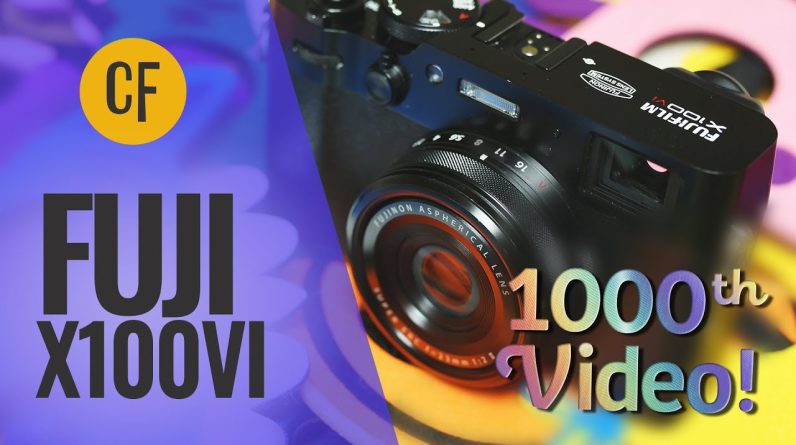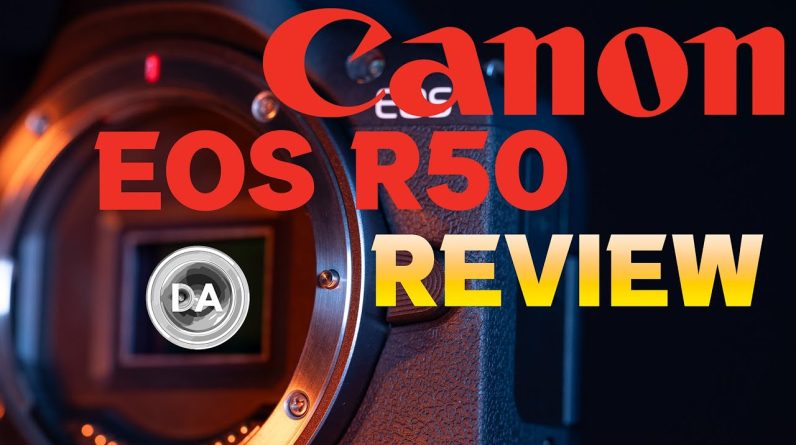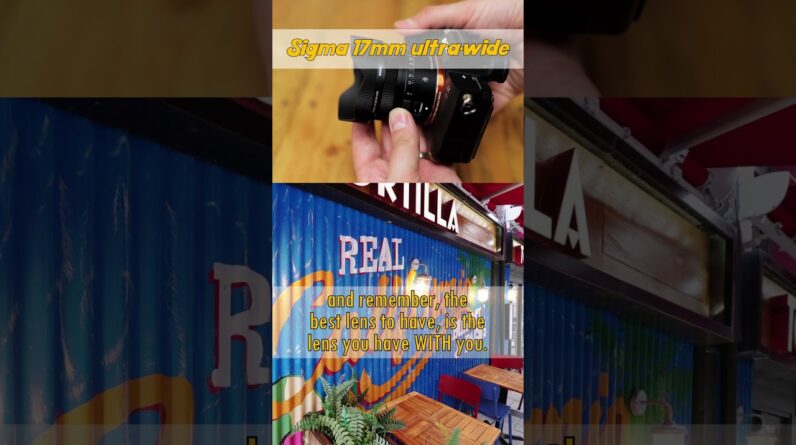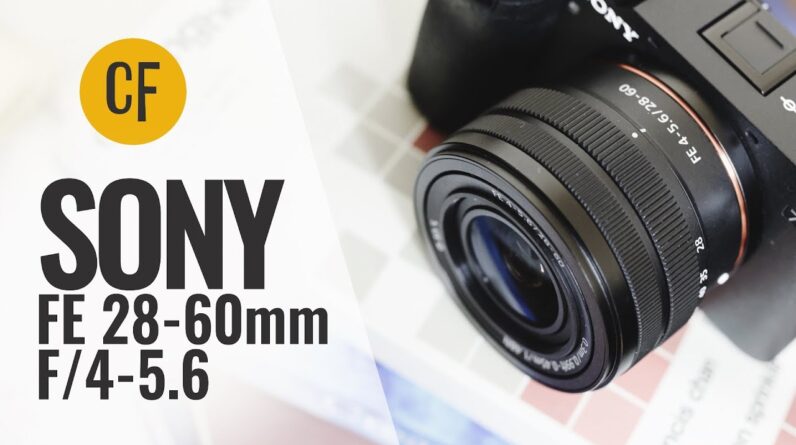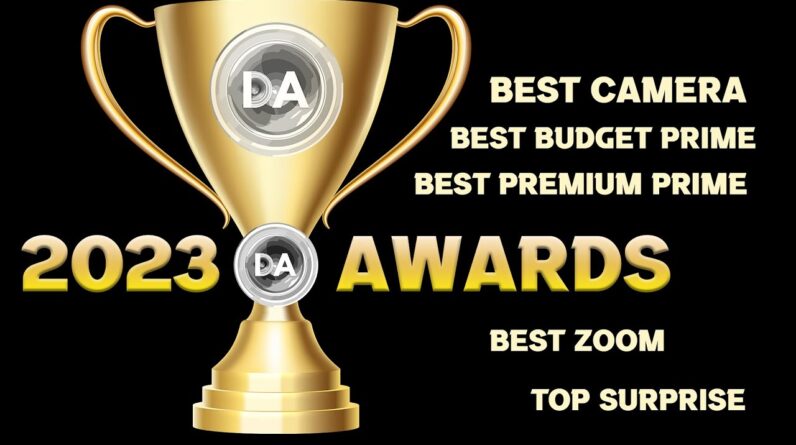[Music] Hi I'm Dustin Abbott and I'm here today To give you my 40 megapixel 2024 review Of the very very common and much beloved Kit lens the XF 18 to 55 mm this is an R LM ois s lens this is a lens obviously That has been around for a while at this Point I think somewhere around 11 or 12 Years and thus it has been sold with Many many different cameras along the Way and continues to be sold up until This point though it science Point Towards it being replaced in the near Future if the rumors are to be believed Now this lens has more company than what It used to it started off as the first Of its kind is kind of a standard zoom And it was joined by first the Fuji 16 To 55 mm which runs about $1,200 then then much later we got newer Lenses like the Tamron 17 to 70 mm f2.8 VC lens that's an optical stabilizer and Then the Sigma 18 to 50 mm f2.8 now the Sigma runs $549 the Tamron $799 about $800 now the pure retail for This kit lens is considerably higher Than a lot of the competing kit lenses Because it is a little bit more premium And so the full retail pop for is about $700 though it comes for as little as About 400 in kit probably very few People have paid the full $700 for it Because at this point you're going to
Get it you're probably going to get it Either in a kit or you're going to get It on the used Market where you can get It for considerably cheaper so the Question is is this lens is it still Holding up at this point with modern Standards and in particular the ultra High resolution that's available on Fuji Cameras now and that's that 40 megapixel Um extra trans sensor that's found in Cameras like my xh2 here so we're going To dive in and see how it holds up to These modern standards starting with Taking a look at the build here now this Is a lens that has always felt more Premium in terms of its build than what Most kit lenses which tend to be plastic Fantastics that's not the case here this Is built basically just like any of uh Fuji's other premium type lenses with a Very very few minor exceptions that We'll get to in just a moment now if you Don't speak Fuji let's break down what All of those letters mean in the name of The lens the r refers to ring or Aperture ring and so it does have an Aperture ring though unlike a lot of Other lenses this doesn't actually have Set Clicks in terms of the you know Designations of where the stops are and So this is a variable aperture zoom and So it's much harder to do that and so What you've got here instead is a lens That or a ring that will rotate
Endlessly it is clicked along the way There is no dclick option the LM refers To the linear motor which is the focus System here more on that in just a Moment the ois refers to Optical image Stabilization and so this makes it of The two kind of standard zooms the 16 to Uh 55 mm and then this lens this is the One of the two that has an optical Stabilizer now for a long time that was A very big deal a little bit less of a Big deal at this point as Fuji has Increasingly rolled out embody image Stabilization in their cameras and so I Found in recent comparisons using Non-stabilized versus stabilized lens Like this side by side by side frankly I Didn't really notice the difference of The optical stabilizer but your mileage May vary obviously depending on what Camera you're using for it now as far as Some of the physical features here of These four different standard zooms that Are available at the moment on Fuji X Mount this is the shortest of all of Them it is 6 millim shorter than the Sigma but it's a whopping 36 millim Shorter than the 16 to 55 mm and even More so of the Tamron 17 to 70 mm which Is the longest of the bunch the Dimensions here are 65 mm in diameter by 70.4 mm in length that's 2.56 in by 2. 77 in up front we have a pretty common 58 mm front filter thread the weight
Here is 310 G or about 11 o so compared To some of these kit lenses that I've Used in the past the the plastic Fantastics that's a little bit heavier Than most of them but it's it's only Heavy in a very very relative sense Because overall the weight is still uh Nice and light and I think on most Camera bodies it's going to balance just Fine obviously on a bigger body like my Xh2 it's no problem at all now Unfortunately it is the only one of These four zoom lenses that has a Variable aperture it goes from f2.8 to F4 and unfortunately as is Pretty common With kit lenses that aperture closes Down fast F and so we actually only have Uh f2.8 for a couple of millimet by 20 Mm it closes to F 3.2 by 30 MIM it Closes to F 3.6 by 42 mm we close to F4 Where it remains up until 55 mm and so Unfortunately you're going to have a Fairly significant light Gathering Disadvantage relative to the other Options on the platform something to Consider if you want to shoot in low Light now Fuji is always offset that a Little bit by this having an optical Image stabilizer in it and the image Stabilizer of course it's not as Fantastic as what modern lenses are Because the technology obviously has Improved over that period of time but of Course having a stabilizer of some kind
Is a whole lot better than having no Stabilizer of any kind so even if you're You know there are lenses that are Better than this in terms of the Stabilization it does get the job done It's a little bit harder for me to test At this point I did test it some on the Xt3 back when I did my original original Review of this lens on the xh2 I can't You can't turn off one system Independent of the other so I can't turn Off the ody stabilization and keep the You know in lens stabilization on so Between the two of them it does a great Job I can't really break down where one Begins and the other ends Unfortunately now unlike any of the Other three options this is the only Lens to have no weather sealing of any Kind not even a gasket at the lens mount I would say it also has the poorest Manual focus ring implementation of any Of these it's a pretty thin ring here at The front and there's only the tiniest Little separation between the zoom ring And the manual focus ring what you're Going to find particularly if you're Using gloves is it's not hard to grab One rather than the other and so as far As the implementation there is some very Obvious stepping as you do manual focus And so it's like you you move focus in Little chunks rather than a nice smooth Gliding kind of a a true manual focus
Emulation and so I didn't love manual Focus on this lens at this point it also Unfortunately has the lowest Magnification of any of these lenses it Will produce a maximum magnification of 0.15 times at 30 cm which is easily Bested by some of the others most Notably the Sigma 18 to 50 mm which has A much higher magnification level on It but beyond that the build remains Nice I mean Fuji has not really changed Their design kind of ethos all that much Over the last decade and so this lens Doesn't necessarily feel dated in terms Of the design and the copy that I'm Using a loner from Fuji Canada thanks Fuji it's probably been used a lot of Times and it's holding up really well it Doesn't look much different than a Retail copy so kudos to this lens I do Think it is a well-made lens now when it Comes to autofocus this lens on paper Would seem to be great it's got Fuji's Linear Motors and so I mean that Obviously is their more premium Focus System but as I found comparing it to Both the 16 to 55 mm and then also to Either the Tamron 17 to 70 mm and then The Sigma 18 to 50 Mm this lens shows its age probably the Most when it comes to the focus system It is linear motor technology yes but It's not fresh linear motor technology And it's gotten a lot better over the
Years so I found in a recent three-way Comparison between the Sigma the 16 to 55 in this lens for Stills I rank this Number three out of the group I found That as you can see here that it had the Least Focus confidence kind of some you Know double clutching and pulsing there Before it finally settles on focus and Thus the speed is a little bit closer I Also found that it slowed down more Relative to the others in dimmer light Situations because remember it has a Slower maximum aperture at almost all Focal lengths outside of 18 to 20 mm and So anything beyond that it's going to Have less light Gathering potential and Slow down a little bit more and it also I noted when doing my eye test that You'll notice there's a lot of jumping Back and forth between the the eyes what That tells me is there's just less Confidence it's not locking on to Something and just staying glued there Unless you tell it to move to the other Eye which you do have the option of Doing but the fact that it's jumping Back and forth as you can see here shows You that there is less confidence there Than what is optimal at this stage Remember of course this Focus system was Designed long before the ey idea of a AI Tracking ey detect was even conceived of And so it stands the reason that newer Lenses that are designed with that
Technology in mind do a little bit Better in that regard now when it comes To the video side of things it's a bit Of a mixed bag on the positive side you Can see here that Focus pulls are really Quite good you can see that there's no Real slowdown it's a good rapid Transition from one Focus point to Another now when I switched to doing my Hand test I found that the overall pull Are not bad but it wasn't always as Responsive as say the 16 to 55 mm and That I would move my hand away and there Would be a kind of a pause before it Reacted so not quite as responsive as What I would like the thing that is uh Unfortunate here is that when you're Trying to do static shots you will see Some pulsing particularly if you have All points active which is the way that I kind of prefer to shoot most of the Time I also noted when zooming in and Out that you can see some visible Warping along the side of the frame That's something that's pretty common Unfortunately on Fuji the 16 to 55 Millimeter does better than what this Lens does the sigma and the Tamron if Anything are worse in that regard by the Way so overall autofocus is a bit of a Mixed bag for you know everyday shots Kind of real world shots it did pretty Good as long as the lighting was decent Again I did notice it slow down some in
In lower light situations and I did Notice sometimes a little less Confidence on locking onto an eye than What I would like now now finally let's Talk about the image quality and what I'll do is I'll give you a bit of an Overview and then if you want an optical Deep dive on a 40 megapixel sensor stay Tuned for that right after my conclusion In a few minutes the major disadvantage Here relative to the other competitors We've already covered and that is that There is a variable aperture and so as You're going throughout the zoom range You're going to get you know Increasingly less light Gathering Potential and unfortunately it it's not Like stopping a lens down a lot of times If a lens has a maximum apture say f2.8 You stop it down to F4 by F4 you're Typically starting to see some visible Improvements image quality that's not The case with the variable aperture Zoom Because you know f4 on the telephoto end Is still wide open and so it doesn't Have any advantage of stopping the Aperture down so and a few other metrics When it comes to vignette and Distortion I found that there was some give and Take between this and the 1655 mm this Has a little bit less Distortion there Is a little bit of a very mild mustach Dash pattern left behind but it was only A plus 19 to correct on the wide end and
That's not amazingly good but it's not Bad and it's better than some of the Other options this needed a plus 19 I Found with 16 to 55 I needed a plus 22 With the sigma I needed an even greater Plus 24 so it does well in that metric Now it does have a little bit more Vignette than what does the 16 to 55 mm Though less than the sigma I needed to Correct for a little over two stops of Vignette in the corner wide open at F/2.8 I also found that when it comes to Controlling chromatic aberration that This lens isn't quite as good as the 16 To 55 mm which is basically the tops of The four lenses but it is better than What say the sigma was in my comparative Test and you can see here that there is Some fringing mostly after the plane of Focus in this close comparison but far Less than the sigma for example as you Can see here now when it comes to Resolution it is there that I feel like This lens really shows its age the most I found in doing a lot of side by-side Tests that the six excuse me the 18 to 55 millimeter it showed the least amount Of contrast images just look less Contrasty they have less pop to them Compared to either of the other lenses That I did in this test and so what I Found is that uh you just as you see for Example side by side here in this shot You can see that the there's just kind
Of like the Shadows are almost raised a Bit because contrast just isn't as good And what I found found is that as I went Throughout the zoom range on the Telephoto end it is it gets increasingly Softer as you kind of go throughout that That Zoom range with some of the best Performance at 18 millimet some of the Worst performance at you know 50 millim And Beyond we'll look at that a little Bit closer here in just a moment when it Comes to color that's something that I Feel like uh Fuji's Optical glass has Always been very good and of course Fuji Sensors have a nice color as well I I Felt like this is still probably the one Of the most significant strengths that If you're not pixel peeping this is Still producing really nice looking Images particularly for you know uh Travel type photos you know more Landscape or Street type shots I felt Like they looked nice and clean and I Had this on a golf course I got some Really great looking shots where the Colors captured are really really nice From it that's definitely a strength There when it comes to the bouquet Quality I found that this the bokeh here Is actually a little bit smoother than What is the 16 to 55 mm here I like the Sigma a little bit better but this was Had less busyness a less kind of onion Or concentric circles going on in it but
Of course the problem is is that you're Going to produce less bokeh with this Lens than any of the other lenses for One thing if you're trying to get in Close remember it has the lowest maximum Magnification and of course on the Telephoto end it has the smallest Maximum aperture so as a byproduct this Is not necessarily always an easy lens To produce a lot of bouqu with so it's Not going to give you that PR look to That people are often looking for where The subject really stands out from the Background it's going to be very rare to Be able to create that that situation Remember this is a variable aperture kit Style lens and so don't expect too much From it in the bouquet Department so in conclusion at this Stage I would say the primary reason to Consider this lens is if you're getting It in kit and getting a reasonable price On it or you find a good price on it Used and you really need an optical Image stabilizer if neither one of those Things are apply to you I would say that You're better served at this stage doing One of two things and that is either Buying the Sigma 18 to 50 mm which has a Very similar form factor and is lighter Still and has better image quality Better autofocus basically better Performance all throughout and so and It's also cheaper if you're just
Comparing MSRP the other option is to Wait it is rumored that Fuji will soon Be releasing a 16 to 50mm f2.8 to F4 4.8 W lens so I believe it's going to be Optically superior I think the autof Focus is going to be better and it's Going to have weather ceiling and so Obviously we don't know a lot of details About it it's it's rumored at this point But I would say that it's pretty clear That Fuji does have a replacement this Lens is old at this point and so if you You want to buy something right now I Would probably go for the 18 to 50 mimer This lens has served a lot of people Well and a lot of people have fondness For it but I think the truth of the Matter is is it's a lens that seemed Really high performing when the Resolution level was 16 megapixels still Seemed pretty good when it was 24 Megapixels less good when I first Reviewed it at 26 megapixels on the First XTR sensor and I was like what's All the hype about it wasn't as good as What I expected and here on 40 Megapixels it's just it's too much for An older lens that was never designed to Resolve a sensor with that high of Resolution and so that's why I think a Newer option or waiting is probably Better for you I hope this helps you out You know if you're looking at buying a Lens maybe on the used Market or just
Coming into Fuji hopefully this helps You to make a more informed buying Decision and if you look in the Description down below I do have linkage To a text review there's buying links There and if you want even more Information stay with me right now and We'll dive into an optical deep deep Dive [Music] Together so first of all taking a quick Look at vignette and Distortion here on The uh wide end at 18 mm you can see That there's some obvious Barrel Distortion and some vignette though not A crazy amount of vignette after some Manual correction you can see there's a Little bit of that mustache pattern that Is left though it's not too bad and of Course the correction profile does a Better job with it now when it comes to Longitudinal chromatic aberration we can See in this shot that if we jump in at a High resolution level you can see that There is just a little bit of fringing a Little bit of kind of bleeding with some Fringing around the edge not too bad Before the plan of focus but there is Some kind of greenish green blue Fringing after that as we look towards The bokeh uh highlights here just a mild Amount of fringing there but nothing too Bad likewise in this shot as we take a Look at some of the bright shiny areas
Here again fringing is not looking too Bad and as you look at these lights Looking around the edge of them not too Bad and as we transition towards out of Focus again again very very mild amounts Of fringing but nothing too serious so Both of those metrics this lens actually Does fairly well in the big challenge For this lens is it was never designed With such a high resolution sensor in Mind and so if we do my modern test 40 Megapixels and at 200% magnification you Can see here looking at the center of The frame while there is a decent amount Of resolution that's there you can see That contrast is quite low just there's Lots of areas where there's kind of a Little bit of a smear look to the Textures mid-frame is much the same Again a decent amount of resolution but Contrast is not great and as we scroll Throughout the image we can just see That at no place do the textures really Pop corners again not bad again the Sharpness profile across the frame is Not bad but the contrast just doesn't Hold up on this high resolution sensor And if we go over to the other side you Can see again just the contrast is not Fantastic centering here doesn't look Too bad it all across the frame now if We compare this to a modern lens in the Sigma 18 to 50 mm you can see just what That difference looks like how much more
Contrast there is for the sigma just a Lot more pop to all of those textures a Lot more detail it's look at the text Here just a lot more information there And that's true here in the midf frame And if we pop down to the corners it's The one place where I would say that the Fuji still holds up it probably beats The corners for the sigma by just a Little a little bit stopping down to F4 Does make an improvement as you can see The increasing the contrast here in the Center of the frame less of an Improvement in areas like the midf frame And down into the corners if anything There seem to be a mild regression in The corner a bit more improvement from F4 to F5.6 and if we look down here in the Corners we can see that the corner is a Little bit improved though frankly it Looked better at F2.8 I would say there is a mild bit More Improvement at f8 before defraction Starts to kick in you can see just a Little bit more contrast by f11 you can See the image really starting to soften Once again due to defraction and by the Time you get to F22 which is minimum Aperture here the image is really really Soft so if you compare 18 mm to 23 mm Here on the right we can see that by 23 Mm we've got a little bit more contrast And detail there maximum apture has
Closed F 3.2 but there is a little bit Of improvement in the image quality I Would say the M the mid-frame here has a Little bit better contrast as well Likewise down in the corners here Because this was good at f2.8 and a Little bit worse at others you can see It probably still has the tiniest bit of An edge at f2.8 relative to the 23 mm There at f3.5 stopping down to F4 does Give us a bit of a contrast boost in the Center of the frame in the mid-frame There's also a little bit of contrast Boost and down into the corners again we See thing there's a bit more contrast But like as we saw wide open the detail In the corners actually regresses a Little bit Peak Performance once again Comes at f8 and you can see that the Contrast and the detail is the best at F8 mid-frame is looking nice and crisp Here and down into the corners you can See the corners are much improved this Is a pretty good performance here on This high resolution sensor and so I Would say that if you want best quality Shooting about f8 and somewhere in the Middle of this range from 20 to 30 mm is Going to give you your best results now We can see moving on to 35 mm that There's a bit of a regression in the Center of the frame uh not so much in Contrast but more in just the basic Resolution and you can see these kind of
The text here looks a little bit mushy Even at F4 stopping down a bit that's True we can see that the mid-frame Doesn't look quite as good Corners are Pretty decent not too bad but we can see That overall there's just not as much Resolution in general once again Stopping down gives you some improvement And most at f8 though even at f8 it's Not as sharp as what we saw at 23 mm and Mid-frame is looking pretty good at f8 Not quite as good as at 23 mm but again Corners looking pretty good f8 is Definitely The Sweet Spot for this lens And so if you're shooting at a high Resolution stopping down to f8 is going To give you the best results now if we Move on to the telephoto end of things Here maximum aperture is now F4 even Stopped down to f5.6 so you can see the Center results are really quite soft and The mid-frame is soft and the corners Now are also soft we've been able to Improve things by stopping down to f8 Previously but you can see now even at F8 there's just not a lot of detail There the lens is fairly disappointing On the telephoto end on a high Resolution body let's go to a real world Result to kind of illustrate this so we Have got the sigma on the right the Fuji On the left just 100% magnification here We look in the center of the frame kind Of where Peak Performance should be you
Can see how much better contrast the Sigma has relative to the Fuji as we pan Off towards the side of the frame you Can see that even off towards the edge Here the contrast and the detail is much Better on the sigma whereas the Fuji Just gets kind of soft and a little bit Of mush there looking over on this side Of the image you can see that the Contrast remains Superior for the Sigma Lens we'll finish off by taking a look At a few real world images here's a shot Here that shows that when you can get Close to your subject the bouquet is Actually pretty decent you can see in This that the geometry is not too bad And moving towards the background things Are fairly soft colors remain nice and Rich definitely a strength here and Flare resistance is not perfect but it's Not bad either this image stood out as Looking really nice kind taking Advantage of kind of Peak Performance From this lens at a wider focal length And you can see that here at 18 mm that Off throughout most of the image the Detail looks pretty good the colors are Really really nice that's definitely a Strength and detail I think is Acceptably good here with a little bit Of softening towards the edge but Overall it looks fairly good with the Lens stopped down we can see if we look Closer to the telephoto in this is at
About 43 mm that even sto down a fair Bit that the image overall looks good But you can see that you know as we get Anywhere off right off the center that There is a fair bit of softening towards The edge of the frame details are not Really highly resolved a little bit Mushy through here so again this is a Lens that you know a high resolution Sensor like this is just a little too Much to ask of it so thanks for sticking Around to the very end thanks as always For watching have a great day and let The liid [Music] In

